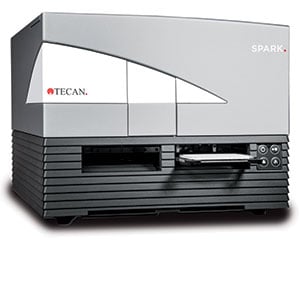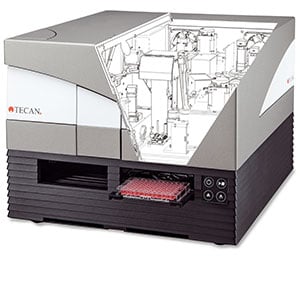Software designed for scientists
SparkControl combines automation of long-term kinetic assays with advanced features such as kinetic conditioning, remote operation and Open Kinetic, providing a hands-off solution for complex experimental set-ups.
Many live cell kinetic experiments require specific actions – for example, addition of a compound – once a certain signal level or OD value is reached. Multimode readers equipped with manual environmental controls can make these types of study cumbersome or error-prone. SparkControl’s kinetic conditioning feature allows you to program the system to automatically perform a required action as soon as a predefined signal is reached in a control well, fitting almost any assay workflow you can think of, in un-lidded or lidded microplates.
SparkControl’s remote control feature allows you to monitor or operate the instrument from outside of the lab. This enables full system control without the need to sit in front of the reader for hours; if you are connected to the internet, then you are connected to your experiment.
A multimode reader is frequently used for multiple applications by various users. Long-term live cell kinetics assays can block the reader for an entire day, limiting overall lab throughput. SparkControl offers an efficient solution: Open Kinetic. This feature allows you to pause and resume kinetic experiments, enabling additional measurements to be performed throughout long-term studies. This frees up the instrument for other users, eliminating one of the major bottlenecks of shared lab equipment, without compromising your valuable research.

















